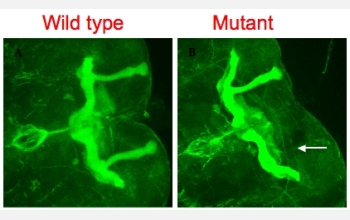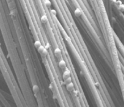|

Press Release 07-112
New Approach Encourages Engineers to Pursue Paradigm Shifts

Emerging Frontiers program to drive high-risk, high-payoff research
August 30, 2007
To advance research at the furthest frontiers of science and engineering, the National Science Foundation (NSF) has created a new office for funding high-risk, interdisciplinary projects that have the potential for transforming entire engineering fields to address critical societal problems.
The Office of Emerging Frontiers in Research and Innovation (EFRI) in the Directorate for Engineering announced its first 12 grants today, a total commitment of nearly $24 million over four years to researchers at 23 institutions.
The first set of awards funds research that may advance basic knowledge and control of both the biological and manufactured worlds.
Specifically, each of the first awards will focus on one of two main goals: understanding cells as integrated systems that interact with their environments, opening the way to understanding disease at the molecular level; and developing "central nervous systems" that allow complex, human-built systems--such as air traffic control, wireless communication networks or citywide transportation--to modify themselves in response to unexpected events.
"It has become evident in the past few decades that many creative contributions and major advances occur when teams of researchers work together at the interfaces amongst disciplines," said Sohi Rastegar, director of the EFRI office. "Exploring these cross-sections with an engineering systems approach provides unique opportunities for projects with potentially transformative results," he added
Rastegar anticipates that the EFRI investments will lead to new research areas for NSF and other agencies to support, new industries or capabilities that enhance our nation's leadership position, and significant progress on a range of national needs and challenges.
Additional information on the EFRI awards, including award abstracts, is available at: http://www.nsf.gov/eng/efri/fy07awards.jsp.
-NSF-

Media Contacts
Joshua A. Chamot, NSF (703) 292-7730 jchamot@nsf.gov
Program Contacts
Sohi Rastegar, NSF (703) 292-8305 srastega@nsf.gov

The National Science Foundation (NSF) is an independent federal agency that
supports fundamental research and education across all fields of science and
engineering, with an annual budget of $6.06 billion. NSF funds reach all 50
states through grants to over 1,900 universities and institutions. Each year,
NSF receives about 45,000 competitive requests for funding, and makes over
11,500 new funding awards. NSF also awards over $400 million in
professional and service contracts yearly.
 Get News Updates by Email Get News Updates by Email
Useful NSF Web Sites:
NSF Home Page: http://www.nsf.gov
NSF News: http://www.nsf.gov/news/
For the News Media: http://www.nsf.gov/news/newsroom.jsp
Science and Engineering Statistics: http://www.nsf.gov/statistics/
Awards Searches: http://www.nsf.gov/awardsearch/
| 




